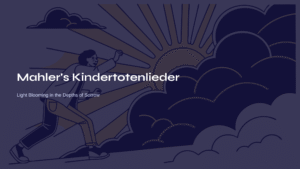Table of Contents
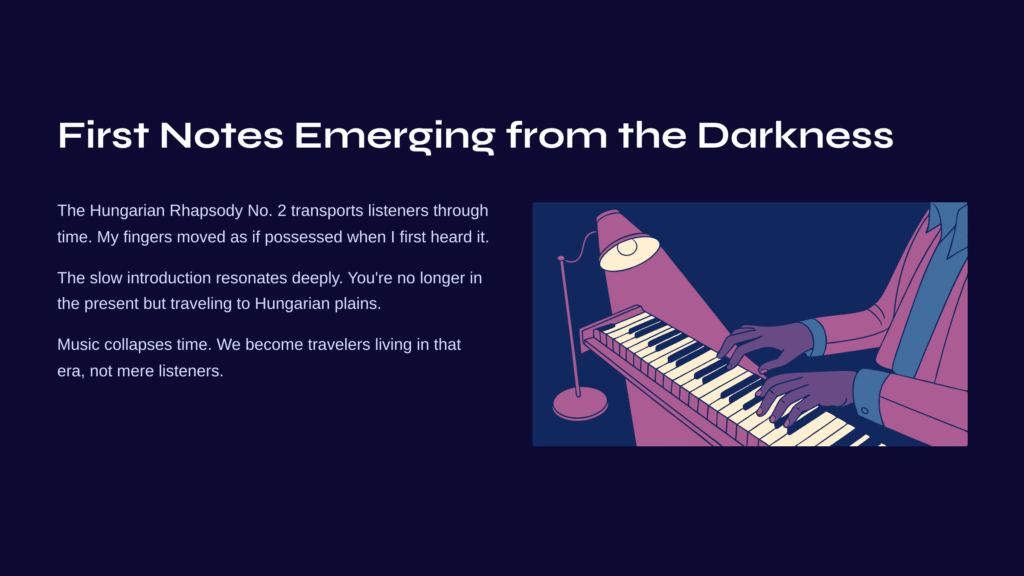
First Notes Emerging from the Darkness
There are moments when sitting at the piano that your fingers seem to move of their own accord, as if someone else were playing through you. That’s how I felt when I first heard Liszt’s Hungarian Rhapsody No. 2. As the slow introduction’s deep resonance filled the room, I was no longer in the 21st century. I was traveling somewhere else entirely—to the dusty Hungarian plains, accompanied by the sound of horse-drawn carriages.
One of music’s greatest magics is its ability to collapse time. Especially before a work like Hungarian Rhapsody No. 2, with its intense ethnic identity, we become not mere listeners but travelers living in that era.
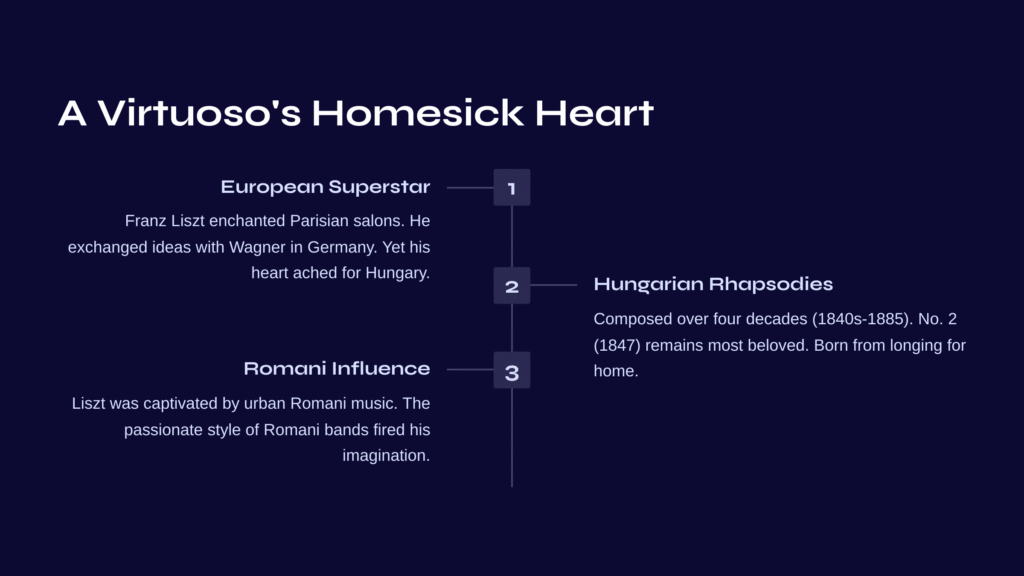
A Virtuoso’s Homesick Heart
Franz Liszt was the 19th century’s musical superstar. Though born in Hungary, he spent his life wandering across Europe from childhood. He enchanted Parisian salon audiences with brilliant performances and engaged in passionate artistic exchanges with Wagner in Germany. Yet beneath it all, a corner of his heart always ached for home.
The complete set of 19 Hungarian Rhapsodies emerged from exactly that longing. Composed over nearly four decades from the 1840s to 1885, this cycle represents Liszt’s attempt to capture the sounds of his remembered Hungary within the confines of the piano. Among them, No. 2, completed in 1847, remains the most beloved to this day.
What’s fascinating is that Liszt was more captivated by urban Romani music than “authentic” Hungarian folk songs. The improvisational, passionate performance style of the Romani bands playing in Budapest and Vienna fired his imagination. Thus the Hungarian Rhapsodies are less scholarly folk music research than fantasy pieces born from one artist’s emotional memory.
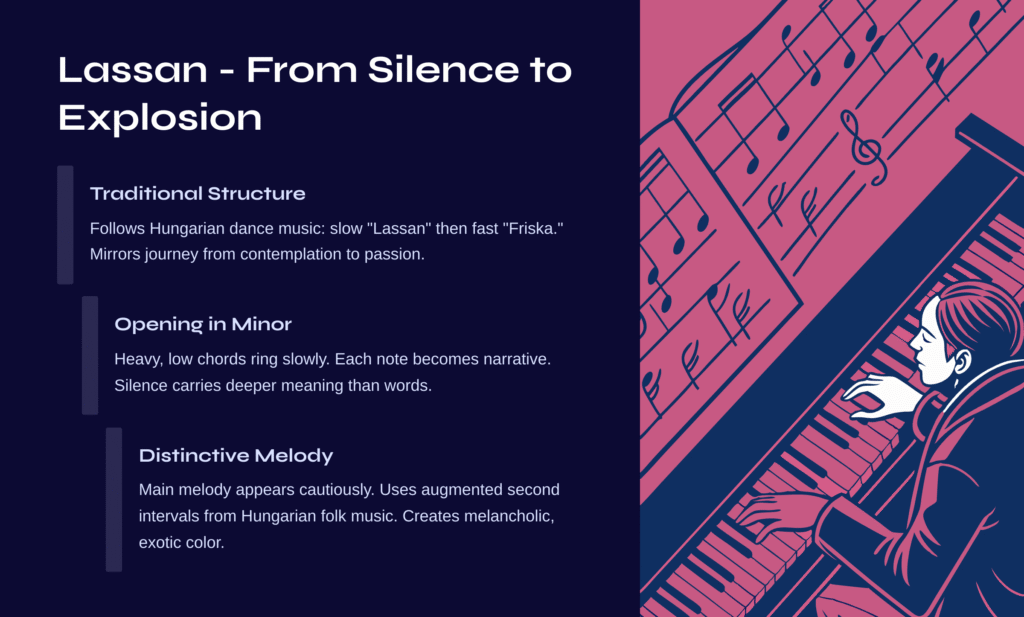
Lassan – From Silence to Explosion
Hungarian Rhapsody No. 2 follows the traditional structure of Hungarian dance music: the slow “Lassan” followed by the fast “Friska.” This seems to mirror the human emotional journey from quiet contemplation to passionate expression.
The Lassan begins in minor mode. Heavy, low chords ring out slowly, like someone beginning to tell an ancient story. Here Liszt demonstrates not mere technical prowess but the philosophical possibilities of the piano itself. Each note becomes not just sound but narrative; silence carries deeper meaning than words.
Pay special attention to the moment when the main melody first appears. Like a song called from a distance, the melody reveals itself cautiously. This melody frequently employs the augmented second interval characteristic of Hungarian folk music, creating a unique color rarely found in Western music—something both melancholic and exotic, stirring mysterious emotions.
As the Lassan progresses, Liszt employs increasingly complex harmonies and ornamentations. But this isn’t showmanship for its own sake. Like a storyteller growing more animated, adding gestures and vocal intensity, the musical narrative naturally builds toward its climax.

Friska – Dance of Madness and Ecstasy
Then finally, the Friska erupts. The tempo suddenly accelerates, and the music plunges into an entirely different world. Now we stand in the heart of a Hungarian village festival. Violins cry out, cimbaloms jangle, people dance in circles.
The piano techniques Liszt employs in the Friska are truly astounding. His hands race across the keyboard, sometimes evoking the sound of an entire Romani band. Particularly when glissandos appear—fingers sweeping across the keys—you can almost hear violin strings being scraped.
In this section, Liszt repeats the same melody multiple times while varying it in different ways each time: sometimes thick with octaves, sometimes as brilliant arpeggios, sometimes as fierce passages alternating between hands. This realizes the improvisational nature of Romani music on the piano—the same song reborn in completely different forms depending on the performer’s mood and momentary inspiration.
The overwhelming energy of the coda is truly breathtaking. Here Liszt employs the piano’s entire range to construct a massive wall of sound, as if every emotion were exploding simultaneously, delivering pure catharsis.
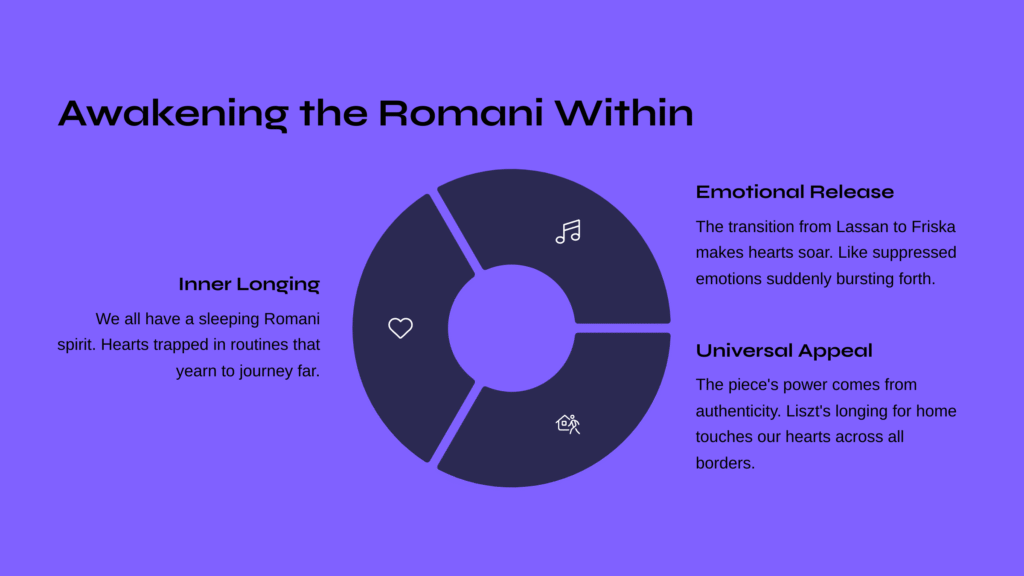
Awakening the Romani Within
Each time I hear this piece, I wonder: don’t we all have a quietly sleeping Romani spirit within us? Hearts that, despite being trapped in daily routines, sometimes long to throw everything away and journey somewhere far. Souls yearning to live freely.
Listening to Hungarian Rhapsody No. 2 awakens that dormant Romani spirit. Especially in the transition from Lassan to Friska, my heart soars along with the music. Like emotions long suppressed suddenly bursting forth in a single moment.
The piece’s power comes not merely from technical perfection or beautiful melodies, but from the authenticity Liszt embedded in the music—his longing for home and thirst for freedom touching our hearts. That’s why even those unfamiliar with classical music can easily be drawn in. The language of emotion transcends all borders and eras.

A Small Guide for Deeper Listening
For those hearing Hungarian Rhapsody No. 2 for the first time, I recommend focusing on several key elements.
First, in the Lassan section, listen to how Liszt uses silence. Feel the tension created by spaces between notes, and the beauty of melodies that break through that silence. In classical music, silence isn’t mere empty space but a musical element carrying meaning in itself.
In the Friska section, pay attention to Liszt’s piano techniques. Particularly impressive are passages where both hands play different rhythms while creating unified music. This realizes on solo piano what happens when multiple instruments in a Romani band each play their roles while maintaining harmony.
For recordings, I recommend performances by Horowitz or Cziffra. Both pianists perfectly capture this piece’s dramatic contrasts. Cziffra’s performance, coming from a Hungarian pianist, especially expresses the work’s ethnic sentiment with profound depth.

A Timeless Romani Song
Ultimately, what Hungarian Rhapsody No. 2 gives us is music’s most fundamental power: the ability to convey human emotion across time and space. That a 19th-century Hungarian composer’s homesickness still resonates in our 21st-century hearts is truly mystical.
Each time I hear this piece, I’m convinced that music isn’t simply a combination of sounds, but a bridge connecting soul to soul. On that bridge, we experience encounters that transcend eras—with Liszt, with the Hungarian Romani he longed for, and with all who love music.
The magic created by fingers dancing across piano keys—that’s exactly the gift Hungarian Rhapsody No. 2 offers us.
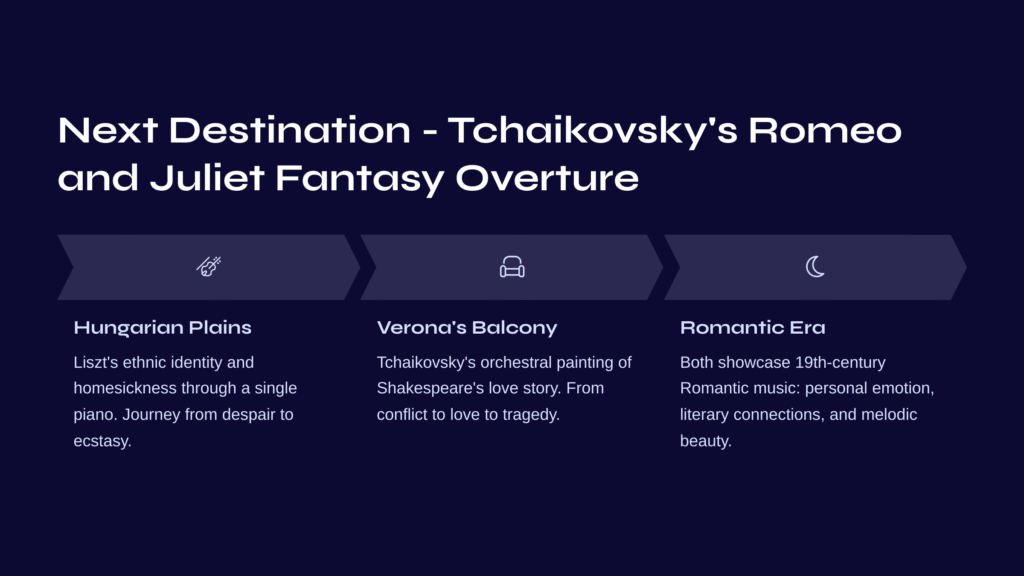
Next Destination – Tchaikovsky’s Romeo and Juliet Fantasy Overture
After our passionate dance on the Hungarian plains, why not journey to beneath Juliet’s balcony in Verona? Tchaikovsky’s Romeo and Juliet Fantasy Overture offers a completely different kind of emotional journey from Liszt’s Hungarian Rhapsody.
Where Liszt poured ethnic identity and homesickness through a single piano, Tchaikovsky painted Shakespeare’s immortal love story with the majestic sound of a full orchestra. Both works feature intense emotional contrasts, but while the Hungarian Rhapsody moves from “despair to ecstasy,” Romeo and Juliet follows the narrative arc of “conflict to love to tragedy.”
Both pieces beautifully showcase the essence of 19th-century Romantic music: the maximization of personal emotion, the marriage of literature and music, and melodic beauty that captures listeners’ hearts. If we’ve danced under Hungary’s burning sun, let’s now listen to love’s song beneath Italy’s moonlight.


